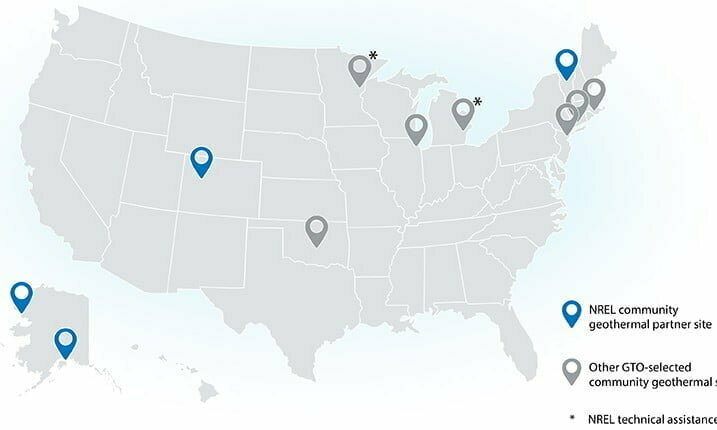 (Credit: NREL)
(Credit: NREL)The U.S. Department of Energy’s (DOE) Geothermal Technologies Office has a new initiative to support community-led geothermal solutions across the country.
The National Renewable Energy Laboratory (NREL) will assist four of the eleven selected communities in Colorado, Vermont, and Alaska, where they will install geothermal technologies. These projects involve developing, designing, and installing geothermal heating and cooling systems that will meet over 25% of the overall heating and cooling needs for the given communities.
Geothermal technology taps into heat produced naturally within the Earth in order to provide low-carbon heating and cooling to businesses and residential areas. Other geothermal applications include electricity generation and direct use of hot water from the Earth. Geothermal power currently holds massive potential as a renewable energy source with a net energy ability far beyond what is currently being used. This initiative could bring the U.S. closer to implementing the widespread use of geothermal energy.
The NREL projects are a part of the White House’s Justice40 initiative, which aims for 40% of overall benefits of federal investments toward clean energy and climate change mitigation to go towards disadvantaged communities. For example, one of the projects, based in Middlebury, Vermont, will develop a geothermal system that will supply at least 50% of heating and cooling needs in a new affordable housing development.
"This provides a chance for us to apply our knowledge to support design and develop these systems," said Matt Mitchell, a researcher in NREL's Building Technologies and Science Center and NREL lead for the projects in Middlebury and Seward. "Our work here will help get these systems out there. It also helps us learn more about them and how these things can be done better in the future, which helps everybody in the long run."
The projects will be completed in two phases. The first phase includes designing the proposed community system and analyzing environmental and permitting needs.
The DOE will then select a subset of projects to advance to a second phase and deploy their systems in other communities. These projects will help identify solutions for environmental justice conditions and develop careers in the renewable energy sector.